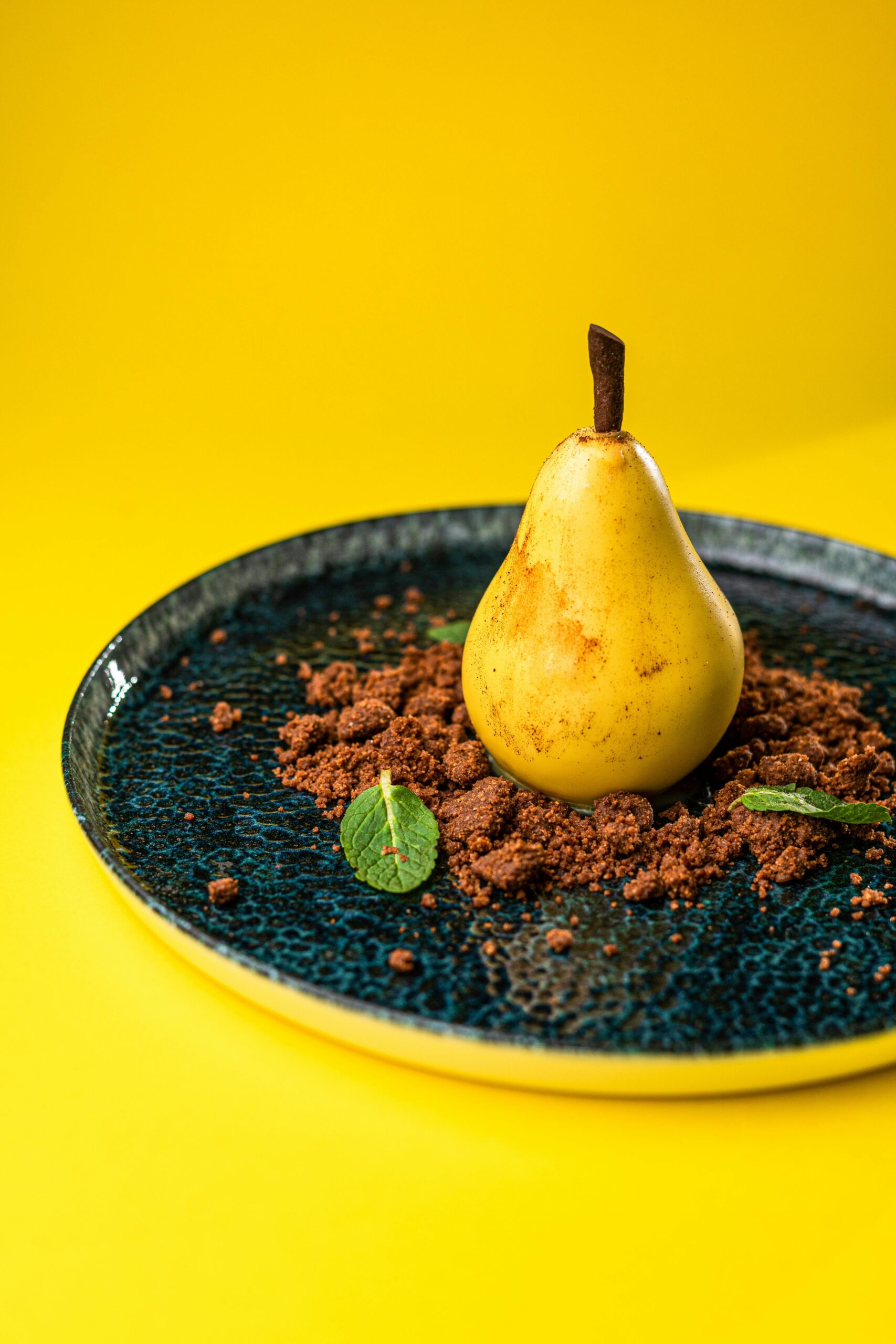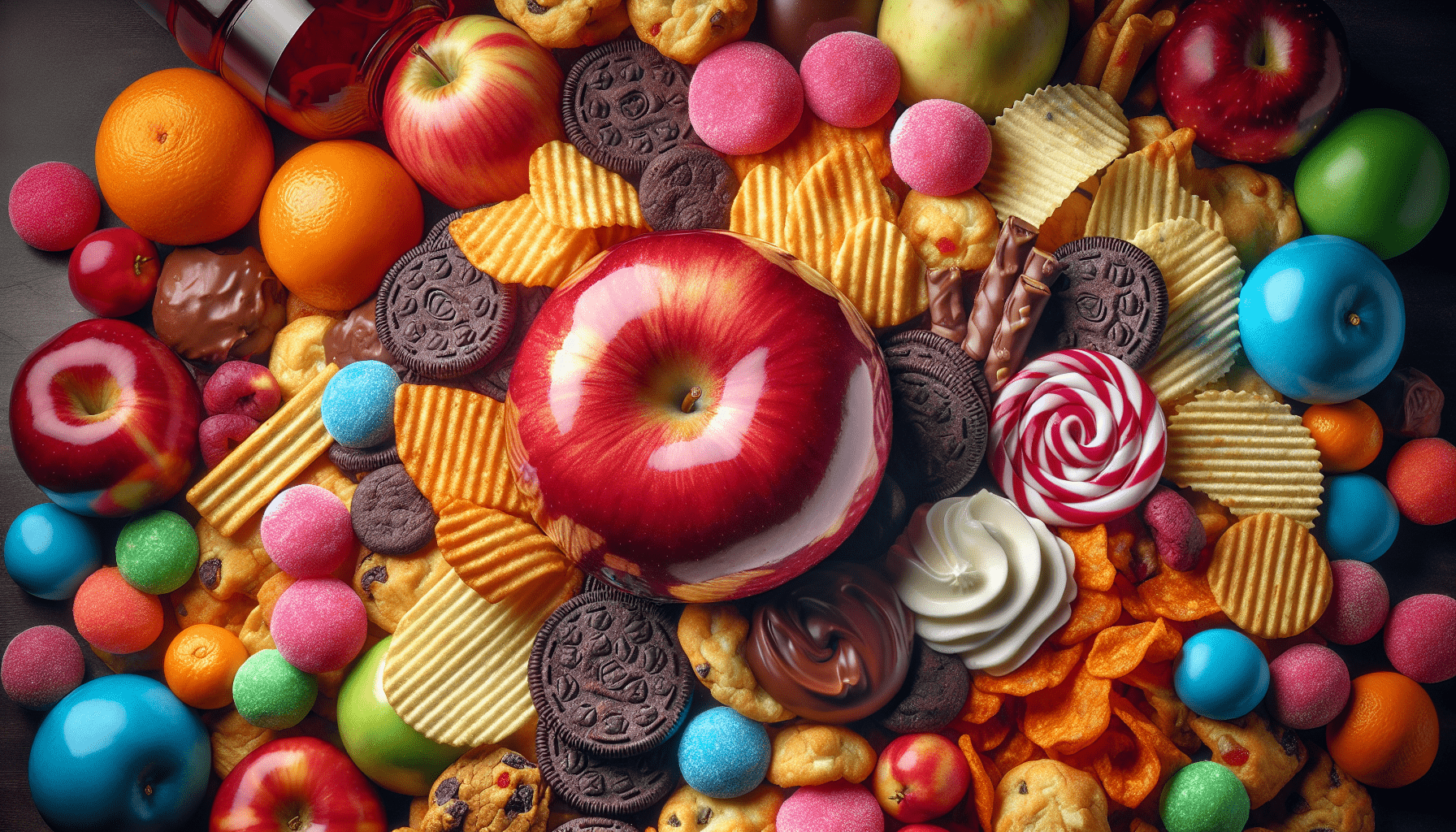You’ll be surprised to learn that what you’ve always known as junk food may not be as unhealthy as you think. As we delve into the world of culinary creations, we discover that there is more to these indulgent treats than meets the eye. From crispy French fries to mouthwatering cheeseburgers, this article uncovers the healthy side of junk food, revealing its hidden nutritional value and challenging our preconceived notions. Get ready to rethink junk and embrace a whole new perspective on your favorite guilty pleasures.
Redefining Junk Food
The traditional view of junk food
When we think of junk food, we often associate it with greasy burgers, sugary snacks, and deep-fried indulgences. Traditionally, junk food has been perceived as highly processed, calorie-dense, and lacking in nutritional value. It has earned a reputation for being detrimental to our health and something to be avoided. However, it’s time to challenge this conventional view and explore new perspectives on junk food.
Exploring new perspectives on junk food
Rather than dismissing junk food as inherently unhealthy, let’s delve into its potential to be part of a balanced diet. By reimagining our understanding of junk food, we can uncover its hidden value and create a healthier version that still satisfies our cravings. It’s essential to acknowledge that not all junk food is created equal, and with a mindful approach, we can find ways to enjoy it without compromising our well-being.
Introducing the concept of healthy junk food
In recent years, the concept of healthy junk food has emerged, bringing together the pleasure of indulgent treats with the benefits of nutritious ingredients. Healthy junk food focuses on incorporating balanced ingredients, creative cooking techniques, and exploring alternative options. By making deliberate choices, we can transform our favorite guilty pleasures into wholesome and satisfying choices that nourish our bodies.
The Nutritional Value of Junk Food
Common misconceptions about junk food
Before diving into the nutritional benefits of junk food, let’s debunk some common misconceptions. Many believe that all junk food lacks essential nutrients and is solely responsible for weight gain and other health issues. While it’s true that some junk food options may be low in nutrients and high in empty calories, it is not the case for all. There are surprising nutritional benefits hidden within certain types of junk food.
Surprising nutritional benefits
Believe it or not, some forms of junk food can offer nutritional value. For example, dark chocolate contains antioxidants that contribute to heart health, and certain types of potato chips are baked, not fried, reducing unhealthy fats. It’s important to realize that not all junk food needs to be off-limits. By selecting options that offer nutritional benefits, we can enjoy our favorite indulgences guilt-free.
Identifying healthier options
To make the most of junk food’s nutritious side, it’s crucial to identify healthier options. Look for snacks made from whole grains, such as popcorn or whole grain pretzels, which provide fiber and other essential nutrients. Opt for snacks that incorporate lean proteins, like roasted chickpeas or turkey jerky, to add nutritional value. By considering the ingredients and making informed choices, we can turn junk food into a smarter dietary option.

Incorporating Balanced Ingredients
Using whole grains in junk food
One way to enhance the nutritional profile of junk food is by incorporating whole grains. Instead of using refined flour, which is stripped of some key nutrients, opt for whole grain alternatives. Whole grain buns for burgers, whole wheat tortilla chips for nachos, or even whole grain flour for baking can infuse junk food with added fiber, vitamins, and minerals. By making this simple substitution, you can elevate your indulgences to a healthier level.
Adding fruits and vegetables to the mix
Another strategy to improve the nutritional value of junk food is by adding fruits and vegetables. Think about loading your burgers or sandwiches with colorful lettuce, juicy tomatoes, or crunchy peppers. Even in snacks like homemade fruit chips or veggie sticks with a tasty dip, fruits and vegetables contribute vital nutrients and make for a more wholesome eating experience. By incorporating these fresh ingredients, you’re one step closer to a well-rounded, junk food meal.
Including lean proteins for a nutritional boost
To make your junk food not only enjoyable but also nutritious, don’t overlook the importance of lean proteins. Consider swapping out fatty ground beef with leaner alternatives like grilled chicken or turkey. Adding beans or lentils to your nachos or tacos can also provide a protein-packed punch. By introducing lean proteins, you’ll not only feel more satisfied after indulging in your favorite junk food but also give your body the necessary building blocks for a healthy lifestyle.
Creative Cooking Techniques
Baking instead of frying
When it comes to cooking junk food, a simple yet effective technique to reduce unhealthy fats is baking instead of frying. Rather than immersing your food in oil, consider baking it in the oven. This approach significantly lowers the calorie content while still achieving the desired level of crunchiness. Baked chicken tenders, sweet potato fries, or even homemade baked chips will satisfy your cravings while being kinder to your body.
Replacing unhealthy fats and oils
In addition to baking, it’s important to be mindful of the fats and oils used in preparing junk food. Opt for healthier alternatives to saturated or trans fats, such as olive oil or avocado oil. These heart-healthy options provide essential fatty acids and can help lower cholesterol levels. By making smart choices in your cooking oils, you can turn your junk food into a healthier option without sacrificing flavor.
Experimenting with different flavor profiles
One of the joys of junk food is its delicious taste. By experimenting with different flavor profiles, you can elevate the eating experience while still keeping it healthy. For example, try adding herbs and spices to your homemade popcorn for a savory twist, or toss your sweet potato fries in a mix of cinnamon and nutmeg for a delightful dessert-like treat. By exploring different flavors, you’ll discover new dimensions to your favorite junk food without compromising on health.

Alternative Junk Food Options
Exploring plant-based alternatives
For those following a plant-based diet or simply looking for alternatives, the world of healthy junk food offers exciting options. Plant-based alternatives now abound, from vegan burgers made with a blend of vegetables and legumes to dairy-free ice cream options made with almond or coconut milk. These alternatives not only provide essential nutrients but also cater to a broader range of dietary preferences, making junk food accessible to everyone.
Gluten-free and dairy-free options
With the increasing awareness of gluten and dairy sensitivities, it’s important to include options that cater to these dietary restrictions. Thankfully, the market now offers gluten-free and dairy-free versions of popular junk food items, such as cookies, cakes, and even pizza crusts. These alternatives allow individuals with celiac disease, gluten intolerance, or lactose intolerance to enjoy their favorite treats without compromising their health.
Low-sugar and reduced-sodium alternatives
In our quest for healthier junk food, it’s crucial to pay attention to sugar and sodium content. Many manufacturers now produce low-sugar versions of popular treats, using natural sweeteners like stevia or erythritol. Similarly, reduced-sodium options are available through the use of spices and herbs to enhance flavor without relying on excessive salt. By opting for these alternatives, you can enjoy your guilty pleasures while keeping your sugar and sodium intake in check.
Mindful Portion Control
The role of portion sizes in healthy eating
While we explore healthier options, it’s essential to remember that portion control plays a significant role in maintaining a balanced diet. Even with healthier versions of junk food, consuming excessive portions can lead to weight gain and other health issues. Learning to listen to your body’s hunger and fullness cues and understanding appropriate serving sizes is crucial in incorporating junk food into a healthy lifestyle.
Practical tips for portion control
There are various practical strategies you can employ to practice portion control with your junk food indulgences. Start by serving yourself smaller portions and being mindful of your plate’s composition, ensuring a balance of nutrients. Consider using smaller plates and bowls to create an optical illusion of a fuller plate. Take your time to savor each bite, allowing yourself to truly enjoy the flavors and textures. By being mindful of portion sizes, you can savor your junk food guilt-free.
Enjoying junk food in moderation
The key to incorporating junk food into a healthy lifestyle is moderation. Rather than completely avoiding your favorite indulgences, allow yourself to enjoy them in moderation. By practicing mindful eating and savoring each bite, you can satisfy your cravings while maintaining a balanced diet. Remember that no food should be off-limits, and an occasional treat can be a part of a healthy, sustainable approach to eating.

Marketing and Packaging Strategies
Promoting the healthy aspects of junk food
To truly redefine junk food, it’s important for manufacturers and marketers to highlight the healthy aspects of their products. By promoting the nutritious ingredients and cooking techniques used, they can reshape the perception of junk food in the minds of consumers. Sharing nutritional information and emphasizing the benefits of certain options can encourage individuals to make smarter choices when indulging in their favorite treats.
Creating appealing packaging designs
In addition to promoting the healthy aspects, appealing packaging designs play a vital role in changing perceptions of junk food. Eye-catching and vibrant designs can capture attention and create excitement around healthier options. By investing in visually appealing packaging, companies can make their products stand out and evoke positive associations with indulgence and well-being.
Educating consumers about healthy options
Lastly, educating consumers about the availability and benefits of healthier junk food options is crucial. Brands and health professionals can collaborate to provide informative resources, such as online articles, workshops, or recipe books. By equipping consumers with knowledge about nutritional alternatives and creative cooking techniques, they can make informed decisions and embrace a positive relationship with junk food.
The Connection Between Mental and Physical Health
Understanding the impact of food on mood
Food not only affects our physical health but also has a profound impact on our mood and overall well-being. Research has shown that certain nutrients can improve mental health and stabilize mood. By choosing healthier versions of junk food, rich in these essential nutrients, we can positively influence our state of mind and enhance our emotional well-being.
How junk food can be a mood booster
Contrary to popular belief, indulging in junk food can sometimes be a mood booster. The pleasure of savoring our favorite comfort foods can evoke feelings of nostalgia and happiness. Moreover, the occasional treat can serve as a reward or a source of comfort during challenging times. By incorporating healthier elements into our indulgences, we can strike a balance between satisfying our cravings and nourishing our mental health.
Balancing mental well-being and healthy eating
When it comes to mental and physical health, balance is key. While it’s important to nourish our bodies with nutritious food, it’s equally crucial to prioritize our mental well-being. By allowing ourselves the occasional indulgence in healthy junk food, we can find that balance. Ensuring that our eating habits align with both our physical and emotional needs is the ultimate goal for a holistic approach to well-being.

Junk Food and Fitness
Fueling workouts with the right snacks
Junk food can play a surprising role in fueling our workouts. Pre-workout snacks that combine carbohydrates for quick energy and protein for muscle recovery can be made healthier by using nutritious ingredients. Opt for whole grain energy bars, homemade protein balls, or even a banana with nut butter for the perfect blend of nutrients to power your exercise routine.
The role of junk food in active lifestyles
For individuals leading active lifestyles, incorporating junk food can provide essential calories and energy. Healthy versions of junk food can act as convenient and portable options for quick refueling during physical activities. Snacks like trail mix with nuts, dried fruits, and whole grain cereals or protein-packed smoothies can deliver the necessary nutrients for optimal performance while still satisfying cravings.
Recovering post-exercise with healthy indulgences
After a strenuous workout, the body needs replenishment and recovery. Healthy junk food options can provide the ideal blend of protein, carbohydrates, and essential nutrients to support post-exercise recovery. For instance, Greek yogurt with chopped fruits and a sprinkle of granola can deliver a satisfying and wholesome treat while aiding muscle repair and replenishing glycogen stores.
A Shift in Cultural Norms
Changing societal perceptions of junk food
As we redefine junk food, it’s important to address the cultural norms surrounding it. By challenging the notion that junk food is inherently bad and fostering a more nuanced understanding, we can reshape societal perceptions. Emphasizing the potential for balanced indulgence and highlighting the nutritional benefits can pave the way for healthier choices and a more positive relationship with junk food.
Rejecting diet culture and embracing balance
One of the significant hurdles in redefining junk food is the pervasive influence of diet culture. It is essential to reject extreme dieting approaches that demonize certain foods and instead promote balance and moderation. By shifting the focus from restrictive eating to nourishing our bodies while still enjoying our favorite indulgences, we can foster a healthier and more sustainable approach to nutrition.
Promoting a positive relationship with food
Ultimately, the goal is to promote a positive relationship with food, including junk food. By framing it as an enjoyable part of life rather than a guilty pleasure, we can reduce feelings of guilt, shame, and deprivation. Encouraging mindful eating, moderation, and the enjoyment of all types of food can help individuals build a healthier and more sustainable relationship with junk food and, ultimately, with themselves.
In conclusion, redefining junk food involves exploring new perspectives, understanding its nutritional value, incorporating balanced ingredients, implementing creative cooking techniques, and exploring alternative options. It also requires mindful portion control, effective marketing and packaging strategies, and acknowledging the connection between mental and physical health. By embracing a more inclusive and balanced approach to junk food, we can promote a positive relationship with food and lead healthier, more enjoyable lives. So go ahead, indulge in your favorite junk food, and savor every guilt-free bite!
